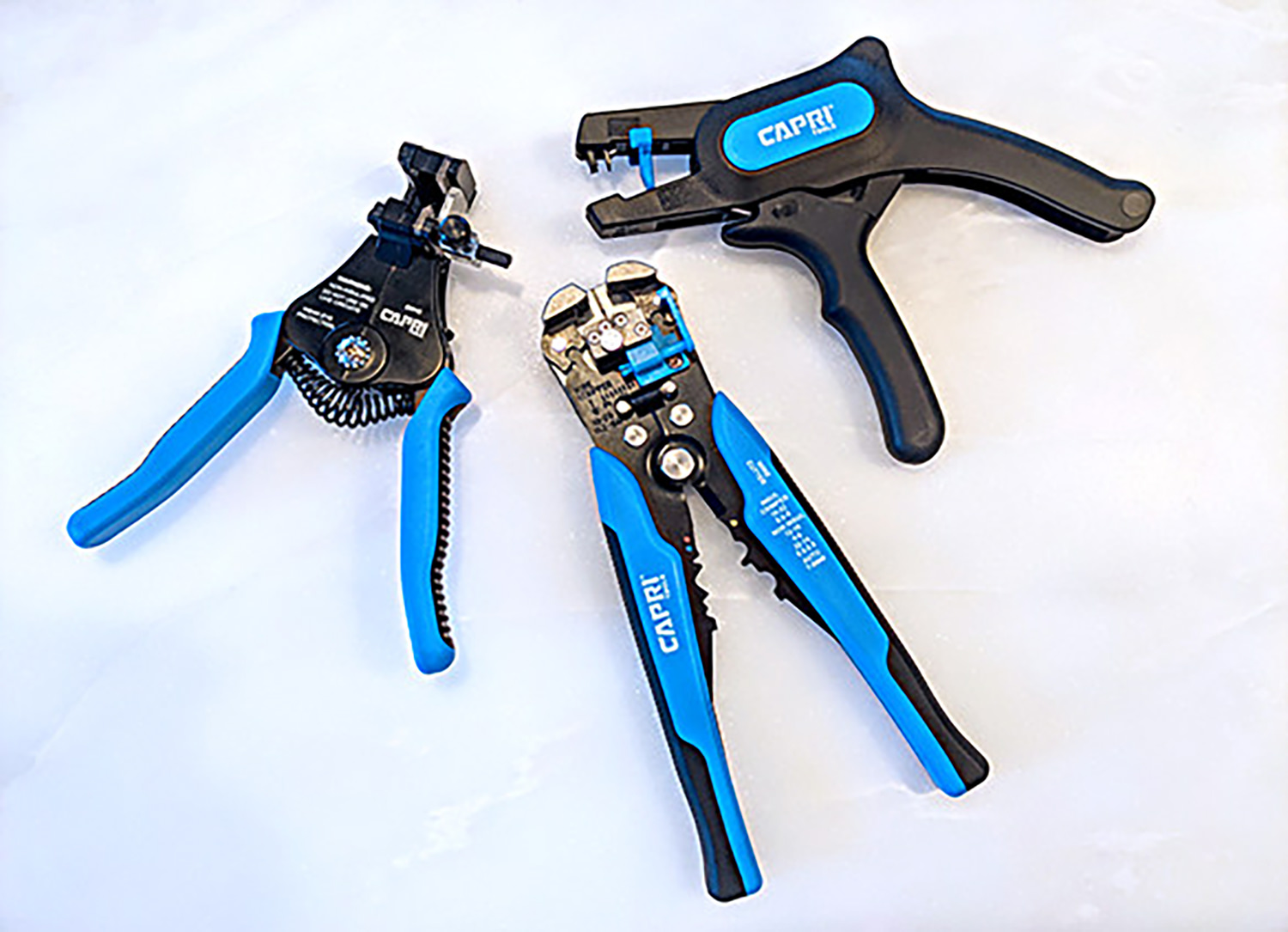I still use the generic wire stripper that came in a $10 Radio Shack soldering kit that I purchased while in grade school. It consists of two rectangles of stamped steel, hinged together, with a single pair of V-shaped cutting slots in its jaws, and yellow rubber coating on its handles. A sliding nutted bolt used to control the cutting depth, while a loop of spring steel re-opened the jaws. I removed both features long ago, and instead, I squeeze until I feel the right amount of pressure to determine when I’ve cut through the wire’s insulation. Having used this stripper for decades, I feel that I have precise control over its cut. In fact, I prefer this cheap, vintage, generic tool over the many $10–$20 plier-style strippers that I own from the likes of Klein, Ideal, Milwaukee, and Commercial Electric – the kind with multiple pairs of specifically sized, semicircular cutting slots in their jaws. I also own three compound-automatic strippers from Capri Tools <capritools.com> that I recommend. The best thing about the $20 CP20012 Self-Adjusting Wire Stripper/Cutter is that I don’t have to align the wire into any cutting slots. I just place the wire into the compound jaws and squeeze the handles. In one fluid motion, one set of linear cutting jaws grabs and pulls the tag end of the insulation, while the other set of ridged jaws grabs and pulls the standing end. It’s hard to picture straight blades stripping round wire; but this tool easily trims PVC jacket off standard 12 AWG solid-copper house line as well as silicone insulation off 20 AWG tinned-stranded-copper project wire. Granted, the stripped ends of the insulation aren’t the cleanest – since there is just as much pulling involved as there is actual cutting – but they’re still serviceable for most applications. A small thumbscrew changes the biting tension of the ridged jaws, and a plastic stop can be positioned for consistent strip lengths. No matter how far I squeeze the handles, the jaws pop out of the way when I release pressure, which prevents the jaws from bending the stripped wire. This also allows me to strip the wire but leave the insulation hanging on the end to keep the strands from separating before I’ve reached the assembly stage of my project. Plus, the handles feature a wire cutter and various crimping jaws. The $23 CP20010 Precision Wire Stripper is a hybrid of the CP20012 and standard multi-slot strippers. One set of jaws is a pair of precision-machined cutting blades with semicircular slots; these blades are replaceable and are available in six different AWG/mm ranges. The other set of jaws grabs the wire and pulls. A clear plastic stop is included. This tool makes perfectly clean cuts in PVC and silicone insulation, and I don’t recall it ever breaking a single strand of wire, even with super-thin 26 AWG stranded cable. Too bad the CP20010 requires a full squeeze of the handles before release, or the cutting jaws won’t snap out of the way to ensure the stripped wire isn’t bent. The $15 CP20011 Automatic Wire Stripper has a single pair of V-shaped slots to cut and pull the insulation; you could call it the compound-automatic descendant of my vintage stripper from Radio Shack. It has a pistol-shaped, nylon-plastic frame that’s super lightweight and easy to maneuver, so it’s ideal for finesse work. For example, if I need to cut and re-strip a 24 AWG lead that connects a chassis-mounted LED to a circuit board without unintentionally pulling the lead off the circuit board,
this is the tool I use. Its jaws can’t inadvertently snap back and bend the stripped wire, and a light-duty wire cutter is integrated in its trigger. –AH


